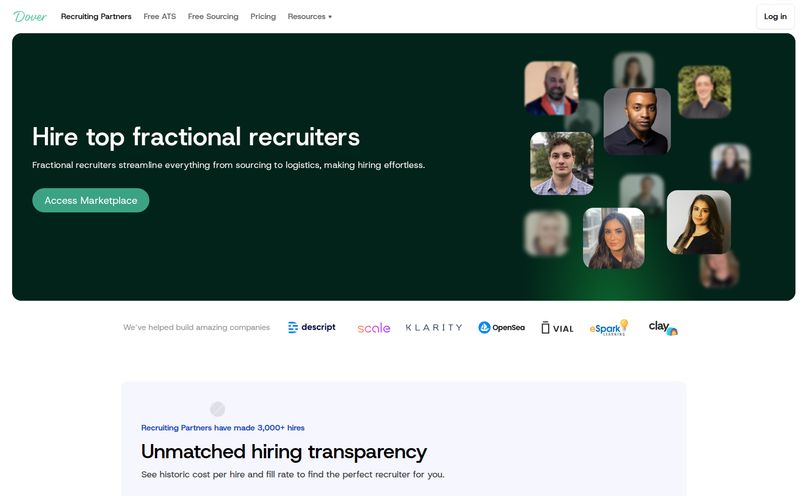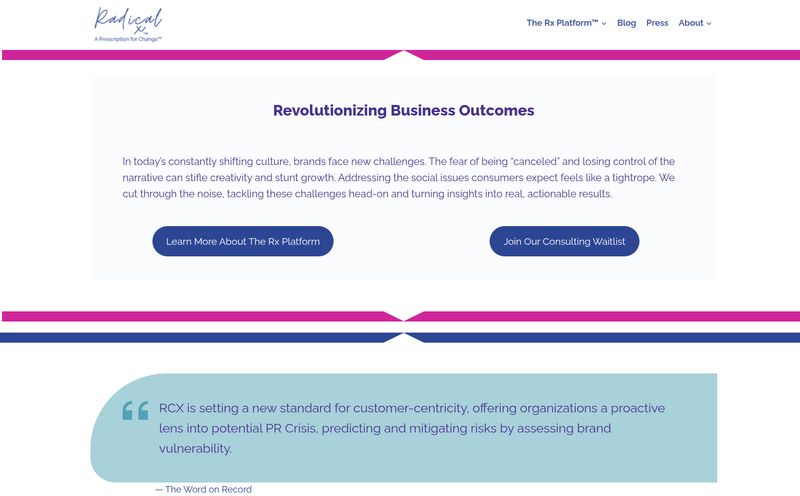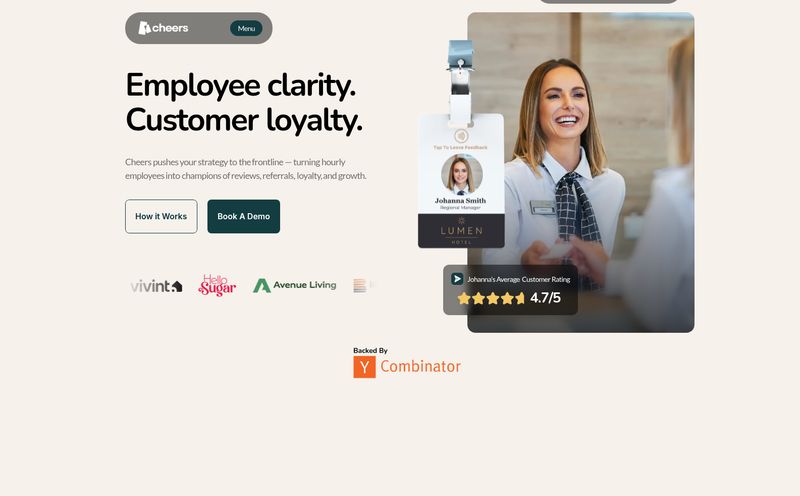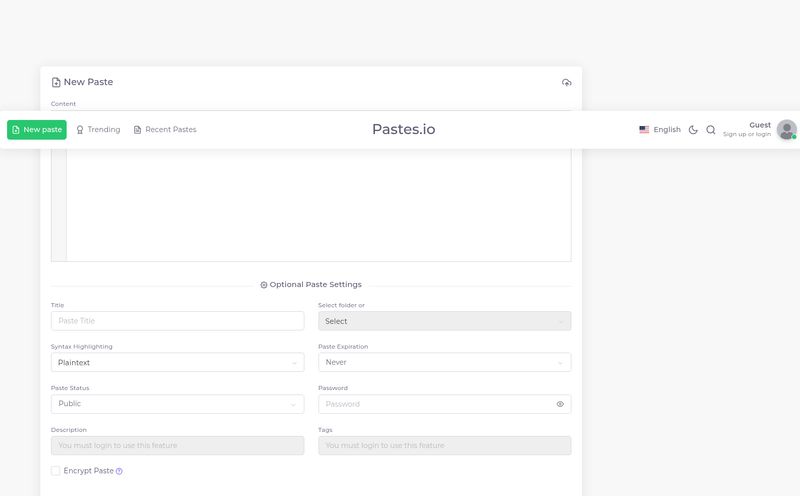I still remember my first time. The nervous excitement after pointing my domain to new hosting, the surprisingly fast five-minute install, and then... there it was. A clean, stark white page with the title "My Blog" and that iconic first post: "Hello world!". For a second, I felt a surge of accomplishment. I was a website owner! A blogger! And then, a moment later, a wave of... what now?
If you've ever started a self-hosted blog, you know exactly the screen I'm talking about. It's the digital equivalent of being handed a set of keys to a brand new, completely empty apartment. You've got walls, a floor, and a door. It's technically a home, but it's not your home yet. It's full of potential, but also a little bit intimidating.
Recently, I stumbled across a site just like it—a fresh, new WordPress install. It had the default post, a sample page, and that auto-generated privacy policy text that makes your eyes glaze over. And it got me thinking about that initial starting point that connects us all. It's not a flaw or a sign of a cheap platform; it's the foundation. It's the most powerful starting point on the web.
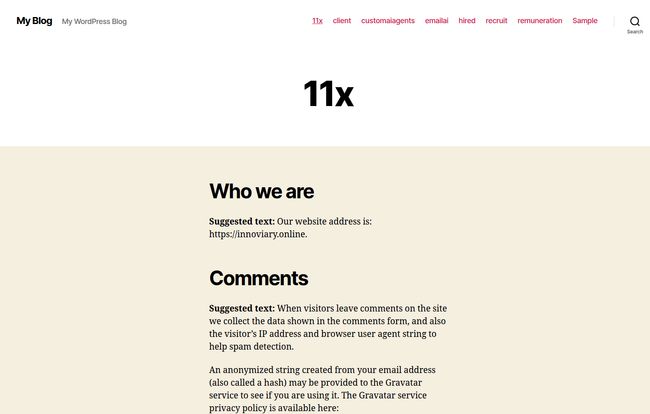
Visit My Blog
What Are We Really Looking At?
When you see a site like "My Blog," you're not seeing a finished product. You're seeing the core of the most popular Content Management System (CMS) on the planet. According to W3Techs, WordPress powers over 43% of all websites on the internet. That's... a staggering number. And they all started right here.
This default state gives you the essentials:
- A Blogging Engine: The whole "Recent Posts," "Recent Comments," "Archives," and "Categories" structure is built-in. You can start writing and publishing immediately.
- A Page Builder: You can create static pages like an 'About Us' or 'Contact' page right out of the gate.
- A Commenting System: It's ready for reader engagement from minute one.
- The Bones of Compliance: That boring privacy policy page? It's WordPress giving you a head start on being transparent with your visitors about data like cookies and comments. It’s boilerplate, sure, but it's a helpful nudge in the right direction.
So yeah, on its own, it's pretty barebones. But that's the point. It's not bloated with features you'll never use. It’s a clean slate. A lump of clay waiting for you to shape it.
The Deceptive Simplicity of a Blank Slate
The beauty of this initial setup is its simplicity. It just works. You don’t need a manual to figure out how to write a post and hit 'Publish.' In a world of overly complex SaaS platforms, there's something refreshing about that. You could literally have an idea and share it with the world in under ten minutes.
But let's be honest. Nobody climbs the SEO ladder with a default theme and a "Hello world!" post. The biggest mistake I see new bloggers make is getting stuck here. They write a few posts, wonder why no one is visiting, and then get discouraged. This initial state is just the launchpad, not the rocket ship. To really get off the ground, you need to start customizing.
Unleashing the Power: Moving Beyond the Default
Alright, so how do we take this empty apartment and turn it into a penthouse suite? This is where the real fun begins. This is where you transform a generic blog into your brand, your platform.
Finding Your Identity with Themes
A WordPress theme is the design layer of your site. It’s the paint, the furniture, the entire aesthetic. The default themes (like Twenty Twenty-Four, etc.) are well-coded and functional, but they're also used by millions. To stand out, you'll want something new.
You can find thousands of free themes right in your WordPress dashboard under Appearance > Themes > Add New. For more premium options, with better support and more features, I always point people towards established theme marketplaces or developers. Think of sites like ThemeForest for variety, or specialized theme shops like Astra, GeneratePress, or Kadence for speed and flexibility. A good theme is one of the best investments you can make, it's the very skeleton of your site's user experience.
Adding Superpowers with Plugins
If themes are the look, plugins are the functionality. They are apps for your website that let you do almost anything imaginable. This is what truly separates WordPress from many simpler site builders.
But hold on. Don't go installing 50 plugins on day one. That’s a surefire way to slow your site to a crawl. Be strategic. Here are the categories I consider non-negotiable for any serious site:
- SEO: You need to tell Google what your site is about. I've used Yoast SEO for years, but many pros I respect are now all-in on Rank Math. Honestly, you can't go wrong with either. Just pick one and learn its ins and outs.
- Performance/Caching: Speed is everything for SEO and user experience. A caching plugin saves static versions of your pages so they load instantly. WP Rocket is a fantastic premium option that’s super easy to use. If you're on a LiteSpeed server (check with your host), the free LiteSpeed Cache plugin is ridiculously powerful.
- Security: The popularity of WordPress also makes it a target. A security plugin like Wordfence or Sucuri Security acts as a firewall and malware scanner. Install one. Today.
- Contact Forms: You need a way for people to reach you. WPForms and Gravity Forms are my go-tos for building anything from a simple contact form to a complex survey.
Lets Talk About the Price Tag
One of the biggest questions is, "What does this actually cost?" The WordPress software itself is free and open-source. Free as in speech, and free as in beer. This is its greatest strength. But running a website isn't completely free. Here’s a realistic breakdown of what you should expect to spend.
| Component | Estimated Cost | Is it Required? |
|---|---|---|
| WordPress.org Software | $0 | Yes |
| Domain Name | $10 - $20 / year | Yes |
| Web Hosting | $5 - $50+ / month | Yes |
| Premium Theme | $0 - $60 (one-time) | No, but recommended |
| Premium Plugins | $0 - $200+ / year | No, but often worth it |
As you can see, you can get started for teh cost of a domain and some cheap shared hosting. But as you grow, you'll likely want to invest in a better theme and some premium plugins to save you time and improve your site’s performance.
The Learning Curve: Gentle Slope or Sheer Cliff?
So, is WordPress hard to learn? Yes and no. The basics are incredibly intuitive. Writing a post is as easy as writing an email. But achieving true mastery? That can take time. Customizing theme files, troubleshooting a plugin conflict, or optimizing your database requires a bit more technical know-how.
But here's the secret weapon: the community. Because WordPress is so massive, there is a tutorial, a YouTube video, or a forum thread for literally any problem you could ever encounter. You are never truly alone when you run into an issue. You're standing on the shoulders of millions of developers and users who came before you.
Your WordPress Starter Questions Answered
What’s the difference between WordPress.com and WordPress.org?
This is the most common point of confusion! WordPress.org is the free, self-hosted software we've been talking about. You download it and install it on your own hosting account, giving you 100% control. WordPress.com is a for-profit service that uses the WordPress software to host your blog for you. It's easier to start with but has more limitations on themes, plugins, and monetization unless you pay for their higher-tier plans.
Can I build an e-commerce store with WordPress?
Absolutely. You do this with a plugin called WooCommerce. It’s a free plugin (also owned by the same company as WordPress) that transforms your site into a fully functional online store. It's a powerhouse in the e-commerce world.
How long does it take to get a basic site live?
From buying a domain to having a live site with the default "Hello world!" post? You can do it in under an hour, easily. To get a nicely designed site with your core pages (Home, About, Contact) and a few blog posts? I'd set aside a weekend.
Is WordPress still good for SEO?
Yes, 100%. Out of the box, it's already pretty good. When you add a powerful SEO plugin like Rank Math or Yoast, you have all the tools you need to structure your content perfectly for search engines. The rest comes down to your actual content quality and backlink strategy.
Do I need to know how to code to use WordPress?
Not at all. With the modern block editor (Gutenberg) and page builder plugins, you can create incredibly complex and beautiful layouts just by dragging and dropping. You only need to touch code if you want to do very deep, specific customizations.
Your Journey Starts Now
That blank screen, that "Hello world!" post... it isn't an ending. It's not a sign of a weak platform. It's an invitation. It’s the starting gun for your online journey. It’s a challenge to take this incredible, free tool and build something meaningful with it.
Every major publication, every successful blogger, every multi-million dollar business built on WordPress started in the exact same place. So don't be intimidated by the blank space. Be excited by it. That "Hello world!" isn't just a placeholder; it's a greeting to a world of new possibilities. Now go build something amazing.
